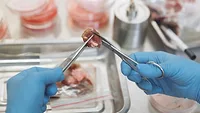WHO Publishes Guidance for Governments on Creating Risk-Based Food Inspection Systems

Image credit: Mohamed_hassan via Pixabay
The World Health Organization (WHO) recently published a guidance for national authorities about how to design, implement, and communicate a risk-based food inspection system.
The guidance includes step-by-step instructions, specific examples and case studies, explanations of risk prioritization tools for categorizing the risk of foods and establishments, advice on estimating inspection frequency based on risk, and directions for reviewing and adjusting inspection plans. Additionally, the Annex describes the main considerations that inspectors must take into account when preparing a food inspection.
Overall, the guidance concludes that a successful risk-based inspection system begins with political commitment and an adequate regulatory framework to support the process, designing the model based on the collection of adequate and relevant information, and periodically subjecting the model to a process of adjustment to allow for continuous improvement of the system.
Looking for quick answers on food safety topics?
Try Ask FSM, our new smart AI search tool.
Ask FSM →









